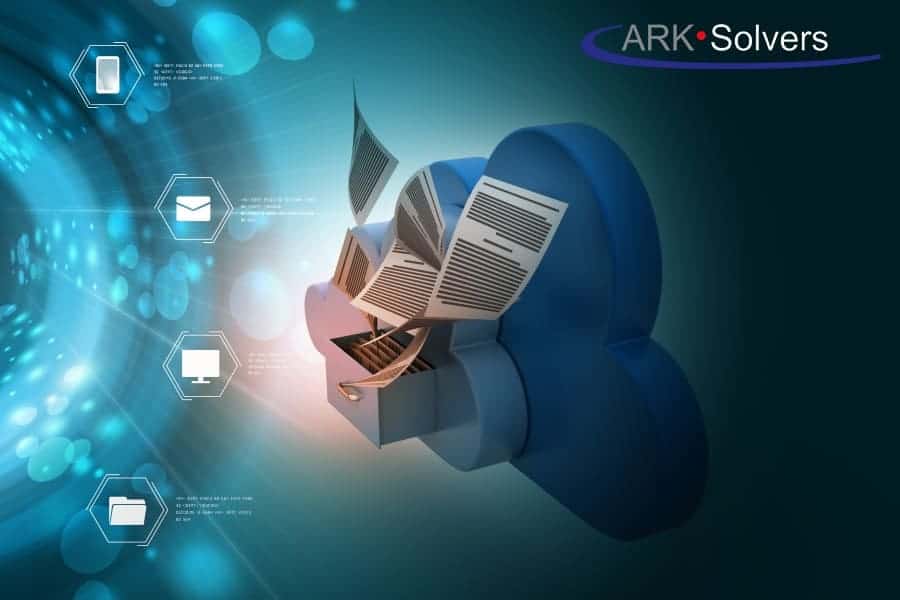Fileless Malware Risk: Protecting Your Business

Fileless Malware Risk: Protecting Your Digital World 2024
Is your digital world safe? Today, a new threat is out there, testing our defenses. Fileless malware is a sneaky cyber attack that’s hard to spot and stop.
This threat hides without touching your hard drive, which is a big worry for everyone online. Knowing about file-less malware is key to staying safe.
We’ll explore file-less malware and how it works, examine its dangers, and discuss ways to fight back. You’ll also learn about new ways to find and stop this threat.
Key Takeaways
- Fileless malware operates without leaving traces on hard drives
- Traditional cybersecurity defenses may struggle against file-less attacks
- Understanding file-less malware is crucial for robust digital protection
- Detection strategies include behavioral analysis and memory scanning
- Proactive measures and employee training are vital in mitigating risks

Understanding Fileless Malware: A Stealthy Cyber Threat
Fileless malware is a big threat to digital security. It works differently from other malware, making it tough to catch and stop.
What is Fileless Malware?
Fileless malware attacks computers by injecting itself into memory. Unlike other malware, it doesn’t need to be stored on hard drives. Instead, it stays in the system’s RAM, hiding from many security tools.
How Fileless Malware Differs from Traditional Malware
Fileless malware doesn’t leave marks on hard drives like other malware. It uses tricks to stay hidden, which helps it get past antivirus software and firewalls.
The Evolution of Fileless Attacks
Fileless malware has become more sophisticated over time. Early versions were simple, but now they’re complex. They use smart ways to hide their tracks, which makes them a big worry for cybersecurity experts.
- Uses system tools to avoid detection
- Leaves minimal traces for investigators
- Adapts quickly to new security measures
Understanding these threats is important to protecting our digital stuff. As fileless malware improves, we need to improve how we defend against it.
Common Techniques Used in Fileless Malware Attacks
Fileless malware attacks use smart ways to avoid being caught. They use malicious scripts and attacks on memory to get into systems without leaving marks on hard drives. Cybercriminals use these methods to find weak spots in trusted processes and apps.
One key technique is memory injection. Attackers put harmful code straight into a computer’s RAM, allowing the malware to work without creating odd files on the system.
Another way they do it is by using living-off-the-land binaries. Hackers use real system tools and processes for their attacks. This helps them stay under the radar and seem like normal system activity.
Evasion techniques are also key in fileless malware attacks. Cybercriminals make their malicious scripts hard to spot and analyze. They might also use code that changes often to dodge detection by signature.
- Memory injection for stealthy operation
- Living-off-the-land binaries to avoid suspicion
- Code obfuscation to evade analysis
- Polymorphic code for continuous evasion
These advanced techniques make fileless malware a big threat to companies. Knowing about these methods is key to making strong defense plans against these sneaky cyber attacks.
The Growing Threat Landscape of Fileless Malware
Fileless malware attacks are becoming more common and pose a big risk to companies around the world. These threats hide well and get past old security methods, making them perfect for advanced attacks.
Recent High-Profile Fileless Malware Attacks
In 2021, a major US pipeline was hit by a smart fileless attack. This attack stopped fuel from flowing on the East Coast. The malware, called Frodo, sneaked into systems without leaving any trace on hard drives. This event showed how important it is to have strong ways to fight against ransomware.
Industries Most Vulnerable to Fileless Threats
Fileless attacks often target financial institutions, healthcare providers, and government agencies. They deal with sensitive data, making them a big draw for hackers who want money or to cause big problems.
The Economic Impact of Fileless Malware Breaches
Fileless malware attacks can cost a lot. A single attack can lead to millions lost in downtime, stolen data, and damage to reputation. Companies also face big fines for not keeping customer info safe, making the financial hit even worse.
- The average cost of a data breach is $4.35 million
- Increase in fileless attacks: 265% since 2019
- Time to detect and contain a breach: 287 days
As fileless malware gets better, companies need to update their security. Having strong ways to fight ransomware and stop data from being stolen is key to protecting digital assets in today’s complex threat world.

Fileless Malware Risk: Assessing Your Organization’s Vulnerability
Organizations are facing a big threat from fileless malware attacks. To fight these sneaky cyber threats, it’s key to check how vulnerable you are. This means doing a deep check on your security and hunting for threats.
First, look at your security setup. Find any weak spots that could let fileless malware in. Check your network, how you protect endpoints, and who can access your systems.
Then, regularly check for malware to find any weak spots. Pay close attention to:
- System memory
- Running processes
- Registry entries
- Network traffic patterns
These spots are where signature-less exploits often hide, avoiding traditional antivirus checks.
Use tools that watch for unusual activity all the time. This way, you can catch fileless attacks early before they do a lot of harm. Make sure your IT team knows how to find the subtle signs of a breach.
Remember, keeping your security up to date is a constant job. Update your risk checks often to stay ahead of new threats. By being alert and updating your defenses, you can lower your risk of getting hit by fileless malware.
Detection Strategies for Fileless Malware
Staying ahead of fileless malware means using the latest detection strategies. These strategies are key to proactive cyber defense. They help organizations find and stop threats early.
Behavioral Analysis and Anomaly Detection
Behavioral analysis is crucial for spotting malware. It looks for unusual system behavior that could mean a lifeless attack. This allows security teams to act quickly if they see something odd.
Memory Scanning and Process Monitoring
Fileless malware often hides in system memory. Regular memory scans can find these threats. Process monitoring watches system activities and flags suspicious processes for further investigation.
Advanced Endpoint Detection and Response (EDR) Solutions
EDR solutions enhance endpoint protection. They provide real-time monitoring and quick response to incidents. They can catch the subtle signs of fileless malware and start defending automatically.
- Continuous system monitoring
- Real-time threat analysis
- Automated incident response
- Detailed forensic data collection
By using these strategies together, organizations can build a strong defense against fileless threats. This multi-layered approach to detection boosts cybersecurity and prevents big breaches.
Proactive Measures to Mitigate Fileless Malware Risks
First, you need to act to keep your digital assets safe from fileless malware. Use strong security steps to lower the chance of being hit by these tricky threats.
- System hardening: Limit potential entry points for attackers by turning off unnecessary services and features.
- Regular patching: Keep all software and systems up-to-date to address known vulnerabilities.
- Least privilege principles: Restrict user access rights to only what’s necessary for their roles.
- Employee training: Educate staff on recognizing and reporting suspicious activities.
Stopping credential theft is key in fighting file-less malware. Use multi-factor authentication and strong, unique passwords for all accounts. Watch and check user actions often to spot any odd behavior that could mean a breach.
To stop lateral movement, divide your network and use strong firewalls between areas. This makes it hard for an attacker to move around your system if they get in at first.
By taking these steps, you can build a strong defense against fileless malware. This helps keep your organization’s important data and resources safe.
Ark Solvers’ Approach to Combating Fileless Threats
Ark Solvers is a strong defender against file-less malware and other advanced threats. Our team creates custom security solutions for different digital spaces. We protect against new cyber risks.
Customized Security Solutions for Diverse Environments
No two organizations are the same, so we create unique endpoint security plans. These plans fit your specific needs and protect against cryptocurrency miners and other hidden threats.
Continuous Monitoring and Rapid Incident Response
We monitor your systems constantly. If we see something odd, our quick response team acts quickly, helping to limit damage from cyber threats.
Employee Training and Awareness Programs
Your team is your first defense. Our training programs teach your staff to recognize and report suspicious actions. This approach makes your defense stronger against cyber threats.
FAQ
What is fileless malware?
Fileless malware doesn’t need to install files on your computer’s disk. Instead, it lives and works in the computer’s memory, making it hard to find and remove.
How does fileless malware differ from traditional malware?
Traditional malware uses files on your hard drive that antivirus software can detect. Fileless malware, however, only exists in memory. It leaves almost no trace and avoids many security checks.
What are some common techniques used in fileless malware attacks?
These attacks often use memory injection and code hiding. They also use system tools for bad purposes and attack without leaving files behind.
What industries are most vulnerable to fileless threats?
Healthcare, finance, and government are at high risk. They handle sensitive data and could face big data breaches and system disruptions.
How can organizations assess their vulnerability to fileless malware?
They should check for weak spots and hunt for threats. Understanding how malware works and using signature-less checks is key to managing risks.
What detection strategies are effective against file-less malware?
Good ways to detect it include watching for unusual behavior and scanning memory. Quick action and using advanced EDR solutions are also vital.
What proactive measures can organizations take to mitigate fileless malware risks?
They should make their systems more secure, keep them updated, and limit user access. Training employees is also crucial to fight fileless threats and stop attacks.
How does Ark Solvers help combat fileless threats?
Ark Solvers offers custom security plans, ongoing monitoring, and fast response to threats. They also train employees to protect against file-less malware and other cyber threats.







